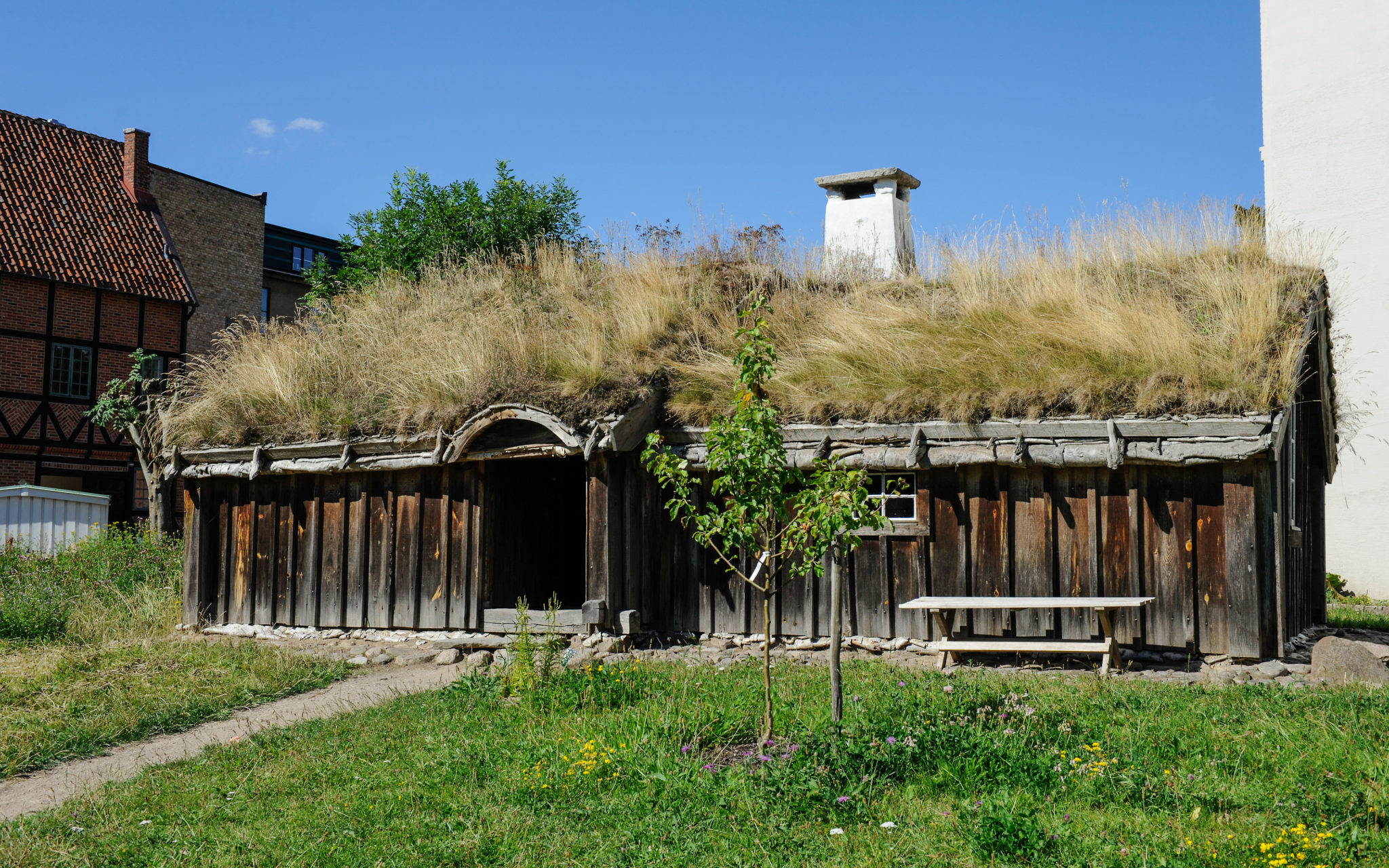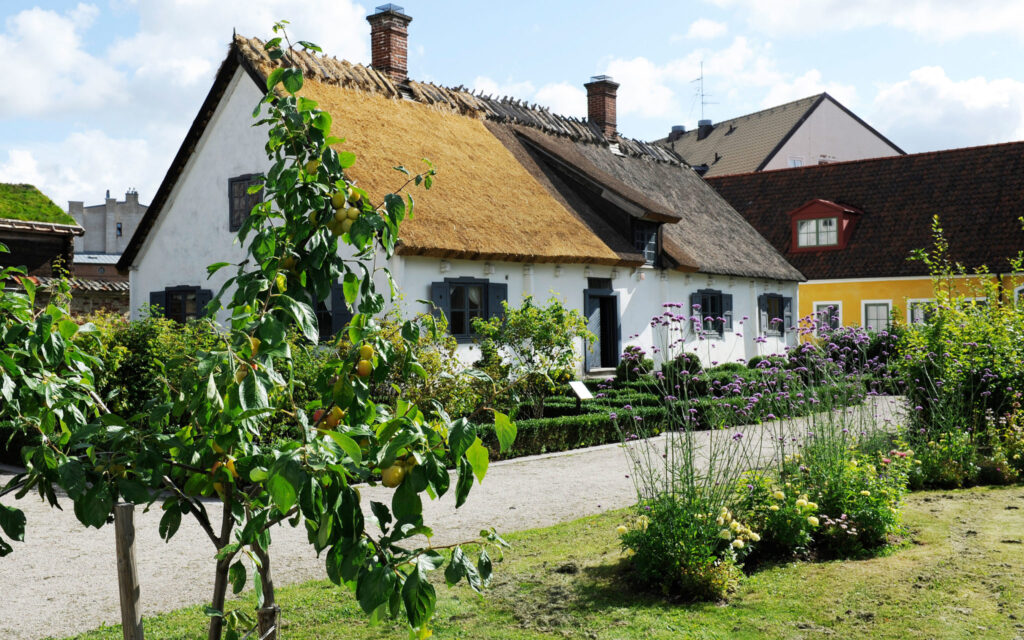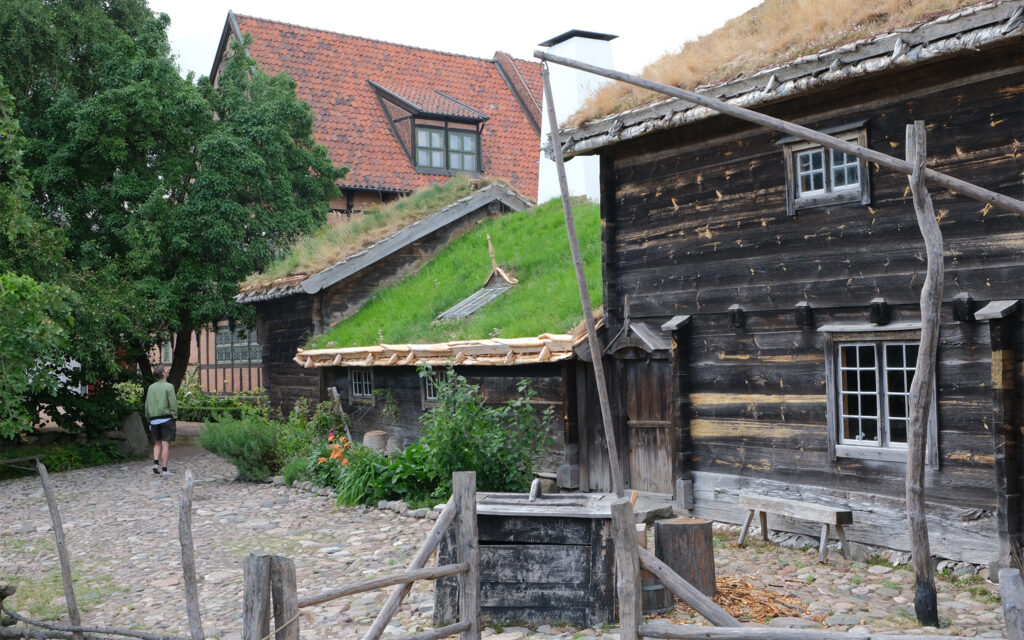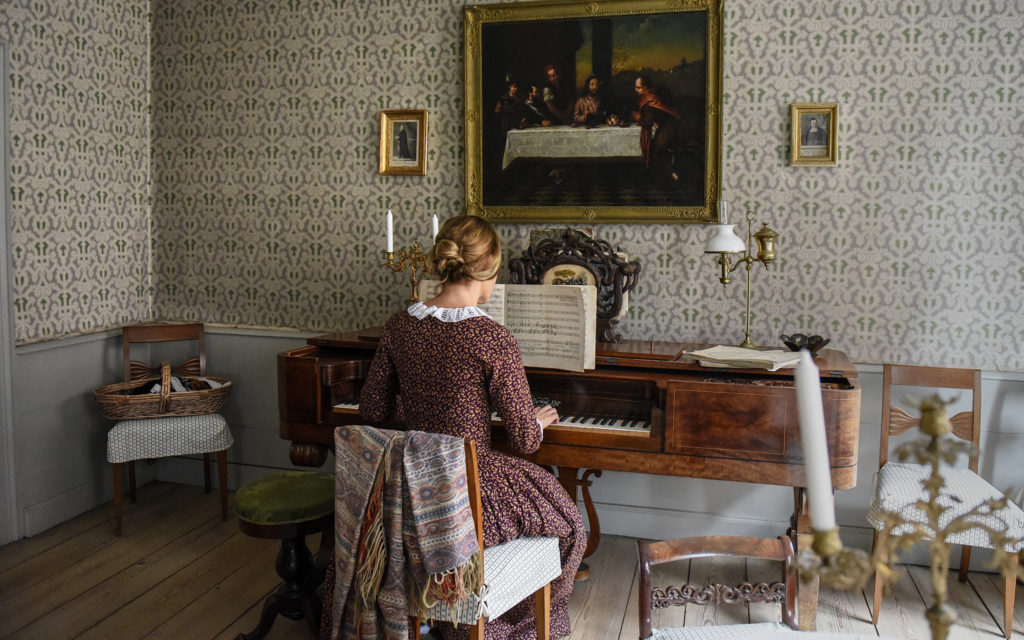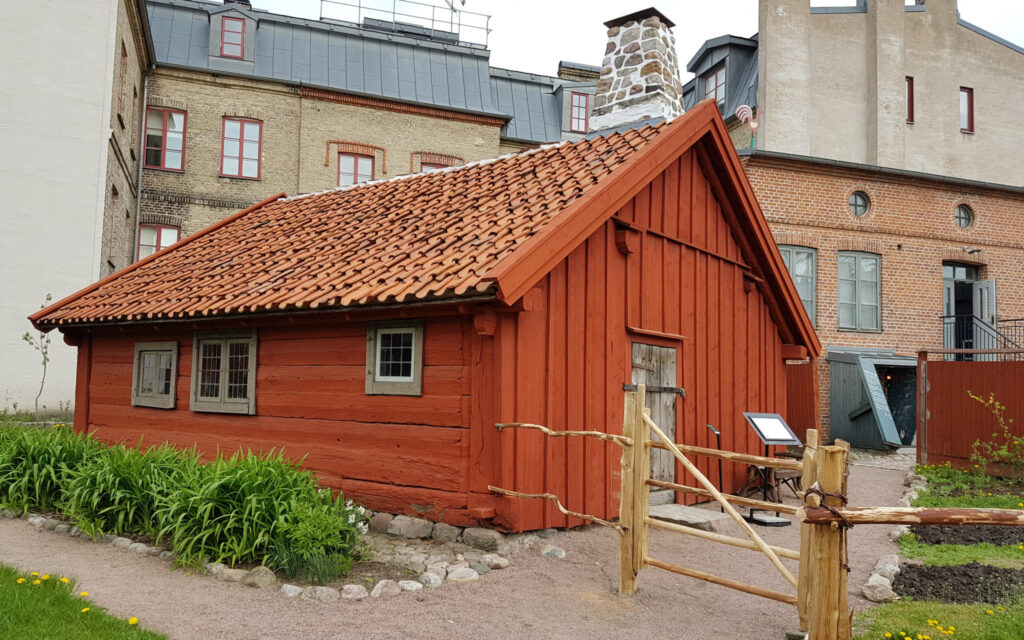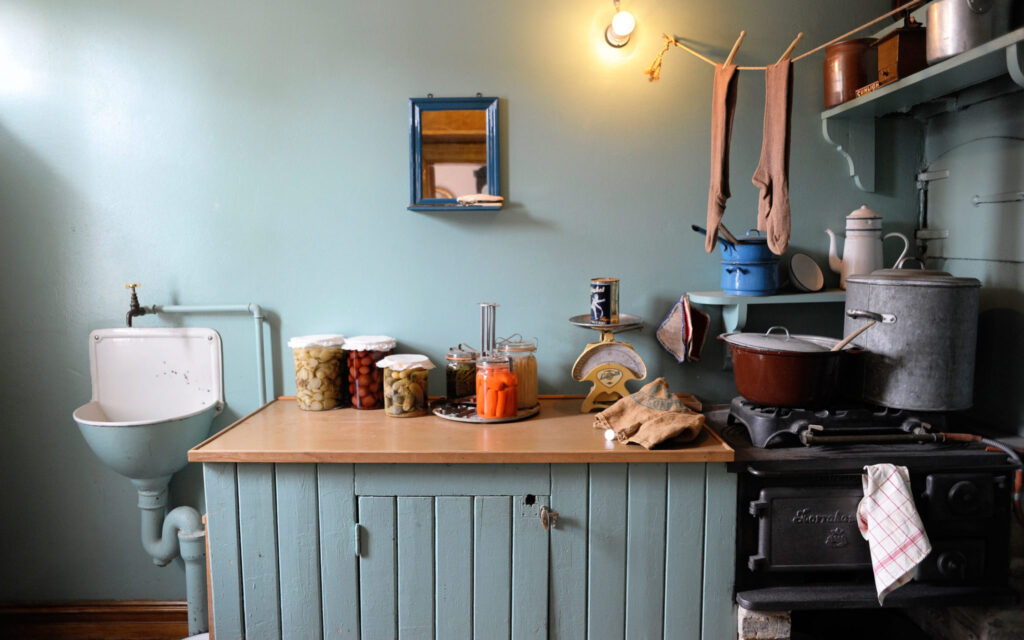Kristina Niklasson lived in this cottage for a little over 30 years, from 1890 to 1923. It originally stood on a hill in Bosmåla, near Urshult in southern Småland. Kristina’s husband had travelled to America in 1888 in an attempt to earn money for the family. Sadly, he never returned. He sent two letters and was then never heard from again. Life, as it is shown in the Bosmåla Croft, tells the story of a poverty-stricken Sweden. Mind your head as you step inside!
To the right is the “living room”, in its most literal sense. Here is the open fire, and this is where the whole family ate and slept. During winter, the food was cooked here as well, as the other two rooms were unheated.
The furnishings are simple, but it was said that Kristina liked to keep the home clean and tidy. You can see printed wallpaper lining the walls and ceiling. Wallpaper became more affordable as printing techniques developed, and it was not only decorative but also helped to protect against draughts. Over the table hangs a paraffin lamp. These became common during the 1870s and provided the cheapest form of lighting up until the 1910s.
Kristina brought in a meagre income for the family by working for the farmers in the area. She spun wool and helped with the harvest. The children were sometimes forced to go out and beg to keep starvation at bay. Two of Kristina’s sons also travelled to America to earn money, and one of them never returned to Sweden.
The room to the left was used for the storage of, amongst other things, Kristina’s spinning wheel. Straight ahead is the kitchen, used during the summer months for cooking as well as baking and butchery. Food that needed to be stored in a cool place was kept below the trapdoor in the floor. The walls in here are lined with the pages of a local newspaper.
The family owned a few hens – imagine them pecking at the ground outside the cottage. In winter they were kept in the kitchen. The small plot of land outside the croft was used to grow potatoes, cabbages and rye.
Further reading:
The booklet Kulturen Open-Air Museum provides more information about the Bosmåla Croft and the other buildings included in this tour. It is available in the museum shop for 60 SEK.
